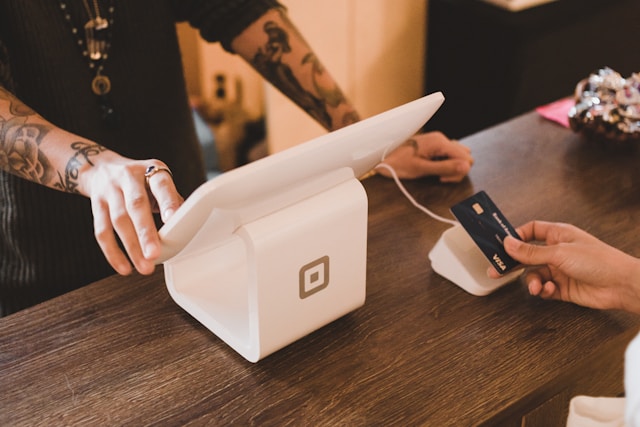You’re not alone. Many customers have discovered a suspicious charge named “WUVISAAFT” on their bank statements. This obscure acronym can be perplexing and confusing for many people. Understanding this fee is critical. It helps you manage your money and keep your accounts safe. To understand the WUVISAAFT fee, let’s look at banking terminologies.
What does WUVISAAFT stand for?
First and foremost, let us break down the acronym. “WUVISAAFT” is a rare term outside of banking. Seeing it on your statement may create concerns. Here is the breakdown:
WU = Western Union.
VISA Inc.
AFT (Automated Funds Transfer)
So, when combined, “WUVISAAFT” stands for “Western Union VISA Automated Funds Transfer.” This sheds light on the charge’s nature. It demonstrates that it is a transaction. Western Union facilitated it using VISA’s automatic system.
Understanding Western Union.
Western Union is a well-known financial company. It offers well-known money transfer services. People use Western Union to transfer and receive money all around the world. They do this in situations where regular banking is not available or convenient. People depend on Western Union’s services. They utilize them to wire money to family members overseas or to make emergency payments.
The Function of VISA
VISA is one of the world’s biggest payment technology firms. They provide the infrastructure for electronic money transfers. It supports VISA-branded credit, debit, and prepaid cards. When you pay with a VISA card, whether online or in person, money is moved. It connects your account with the merchant’s account.
Putting It Together: A Closer Look at WUVISAAFT
We now know that “WUVISAAFT” means Western Union and VISA. Let’s look into when this charge can appear on your bank statement.
International Money Transfers: If you recently sent money overseas using Western Union with a VISA card, the “WUVISAAFT” charge could represent the price for this service. Western Union frequently collaborates with major card networks. For example, it collaborates with VISA to handle these transactions. The charge is for the cost of the transfer.
Receiving Funds: If you received money by Western Union, the sender may have used a Visa card. In this situation, the incoming cash might be associated with the “WUVISAAFT” charge. It shows the fee deducted by Western Union for processing the transfer.
Online purchases made with a VISA card using Western Union’s platform may result in a “WUVISAAFT” charge. This situation is frequent when purchasing goods or services from international vendors. They like to use Western Union for payments.
ATM Withdrawals: If you used a VISA card at a Western Union-branded ATM, such as those in convenience stores and airports, the “WUVISAAFT” charge may display. These ATMs frequently charge fees for withdrawals. You might include the cost in this manner on your statement.
What To Do If You Notice a WUVISAAFT Charge
Unknown charges on your bank statement can be unnerving. However, there are several actions you can do to clarify the situation:
Examine Recent Transactions: Look through your recent transactions to see if there are any payments or receipts that correlate to the “WUVISAAFT” charge. This can aid in determining the source of the transaction.
Contact Your Bank: If you are still confused about the charge, please contact your bank’s customer care. They can offer particular transaction information. These contain the date, the amount, and the source. Banks are also ready to handle any unlawful charges.
Please check with Western Union. If you have a charge from a Western Union transaction, their customer support can help. They can certify that the charge is valid. They can also provide transaction information.
Dispute unlawful Charges: If you feel the “WUVISAAFT” charge is unlawful or fraudulent, inform your bank right once. Most banks have mechanisms in place to dispute charges. They can help you secure your account.
Tips for Securing Transactions
To avoid misunderstanding over unexpected charges on your bank statement, follow these safe transaction suggestions.
Maintain Records: Keep receipts, confirmation emails, and transaction numbers for all financial transactions. If you come across any differences, you can refer to these documents.
Check your bank statements and transaction history online. Unauthorized charges can be detected quickly, preventing further complications.
choose Reliable Platforms: When sending money or making online purchases, choose reliable and secure platforms. Look for safe payment icons, such as the padlock image in the address bar.
Be Wary of Sharing Personal Information: Do not share sensitive financial information until you are assured of the recipient’s validity. Scammers frequently target individuals through phishing emails and bogus websites.
In Conclusion
The “WUVISAAFT” item on your bank statement may seem perplexing at first. Knowing its origins, however, can help to elucidate it. It may be a cost for an international money transfer, an internet purchase, or an ATM withdrawal. The acronym denotes a transaction. It concerns the money systems of Western Union and Visa.
If you are facing this charge and have any questions or concerns, contact your bank or Western Union for assistance. Maintain your level of awareness and alertness. Then you can conduct financial transactions with confidence and security.




